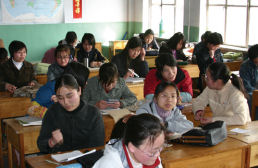China’s Population Growth Too Slow
March 31, 07
By Ken Gassman
China has been one of the world’s most populous countries for centuries. China covers about the same geographic area as the United States, but its population is nearly five times larger. Today, China’s population of 1.3 billion accounts for 20 percent of the world's 6.5 billion people. By 2050, its population will account for an estimated 15 percent of the global population as a result of a dramatically slowing birth rate.

China has undergone dramatic social, economic, and political change over the past 50 years. One of the most meaningful changes is the slowing of its population growth. Since 1949, there have been at least four major government initiatives to reduce the country’s exploding population, especially in the rural areas.
While certain ethnic groups and agricultural workers have been allowed to have more than one child, the current “fertility rate” in China is 1.6 children per family. Statistically, it takes a fertility rate of about 2.1 children per family to maintain a stable population; anything less will result in a decline.
In China, other factors are contributing to its expanding population, despite a low fertility rate. Infant mortality is down. Life expectancy is up sharply, and is expected to double between 1950 and 2050. In addition, most demographers forecast that China’s fertility rate will rise modestly over the next few decades. Finally, some demographers believe that the country has undercounted its population by at least 100 million; these floating migrants will eventually be counted and will contribute to a “reported” population increase.
While China’s population is predicted to expand by 100 million people to 1.4 billion by 2050, India will still likely surpass it in 2035 to become the most populous nation in the world.